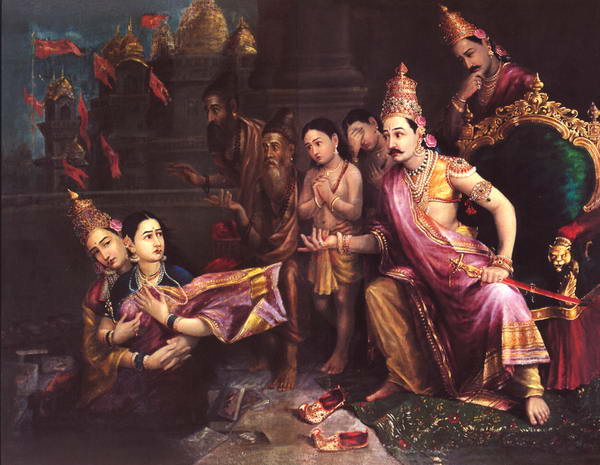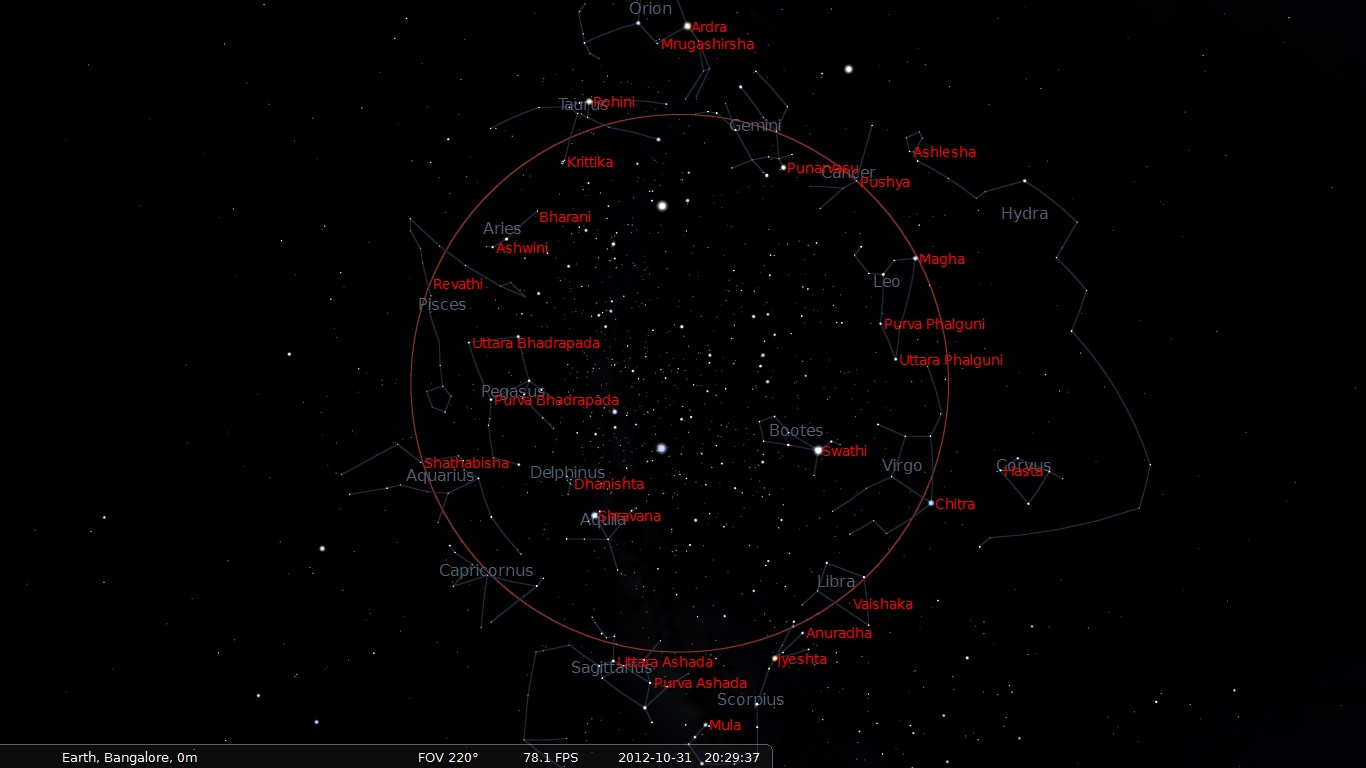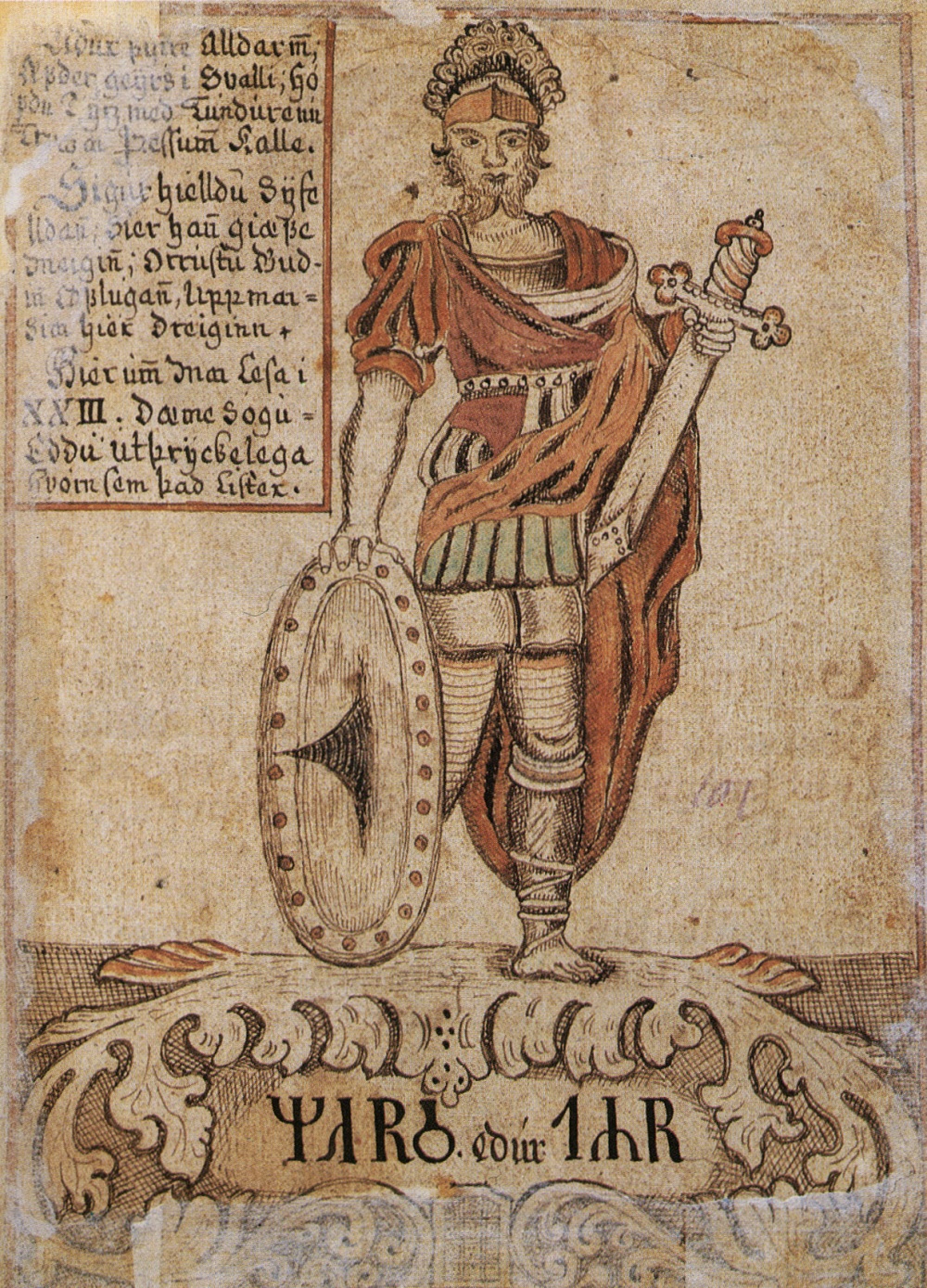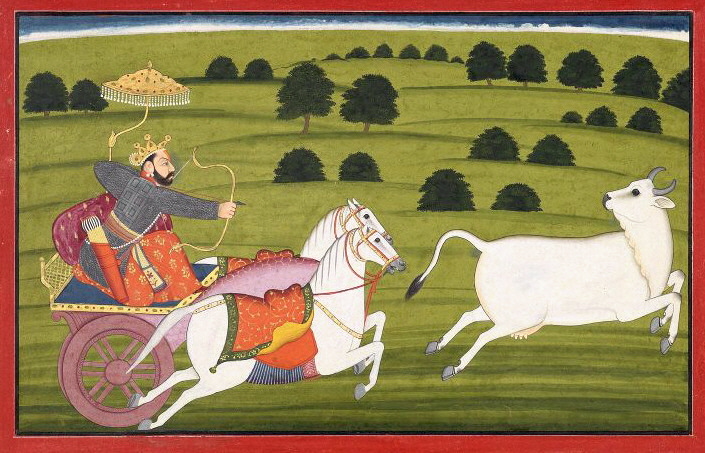|
Mangala
Mangala (, IAST: ) is the personification, as well as the name for the planet Mars, in Hindu literature. Also known as Lohita (), he is the deity of anger, aggression, as well as war. According to Vaishnavism, he is the son of Bhumi, the earth goddess, and Vishnu, born when the latter raised her from the depths of the primordial waters in his Varaha avatar. According to Shaivism, he was born from the god Shiva through a drop of his blood or sweat. Nomenclature Mars (Mangala) is also called: * Raktavarna (रक्तवर्ण) - whose color is like blood. * Bhauma (भौम) - son of Bhumi. * Lohitānga (लोहिताङ्ग) - red bodied (Loha also means Iron, so could also mean Iron Bodied). * Kuja (कुज) - he who is born from Earth. * Bha (भ) - shining. * Dharāputra (धरापुत्र) - son of Dharā. Iconography He is painted red or flame colour, four-armed, carrying a trident (), mace (), lotus (), and a spear (). His mount () is a ram. He ... [...More Info...] [...Related Items...] OR: [Wikipedia] [Google] [Baidu] |
Bhumi (goddess)
Bhumi (Sanskrit: भूमि, romanized: Bhūmi), also known as Bhudevi, Dharani, and Vasundhara, is a significant goddess in Hinduism, personifying the Earth. Her earliest form is reflected in the Vedic goddess Prithvi, though their roles and depictions are drastically different. Bhumi features prominently in the ''Mahabharata'' and various Puranas. According to Vaishnava tradition, she is the second consort of Vishnu, along with Sridevi and Niladevi. As per Hindu mythology, Varaha, the third avatar of Vishnu, saved her from the asura Hiranyaksha and later married her, making her one of his consorts. After this rescue, Varaha and Bhumi have a son named Mangala. Bhumi also bears Narakasura, an asura, due to Hiranyaksha's influence. In the epic ''Ramayana'', she is mentioned as the mother of Sita, the epic's female protagonist. Bhumi is described to be born as Satyabhama, the consort of Krishna, to assist in slaying Narakasura. The Alvar saint Andal is also considered an avata ... [...More Info...] [...Related Items...] OR: [Wikipedia] [Google] [Baidu] |
Nakshatra
Nakshatra () is the term for Lunar mansion in Hindu astrology and Buddhist astrology. A nakshatra is one of 27 (sometimes also 28) sectors along the ecliptic. Their names are related to a prominent star or asterisms in or near the respective sectors. In essence (in Western astronomical terms), a nakshatra simply is a constellation. Every nakshatra is divided into four ''padas'' ( "steps"). The starting point for the nakshatras according to the ''Vedas'' is "Krittika" (it has been argued, because the Pleiades may have started the year at the time the ''Vedas'' were compiled, presumably at the vernal equinox), but, in more recent compilations, the start of the nakshatras list is the point on the ecliptic directly opposite the star Spica, called ''Chitrā'' in Sanskrit. This translates to Ashwinī, a part of the modern constellation of Aries. These compilations, therefore, may have been compiled during the centuries when the sun was passing through Aries at the time of the ver ... [...More Info...] [...Related Items...] OR: [Wikipedia] [Google] [Baidu] |
Tuesday
Tuesday is the day of the week between Monday and Wednesday. According to international standard ISO 8601, Monday is the first day of the week; thus, Tuesday is the second day of the week. According to many traditional calendars, however, Sunday is the first day of the week, so Tuesday is the third day of the week. In some Muslim countries, Saturday is the first day of the week and thus Tuesday is the fourth day of the week. The English name is derived from Middle English , from Old English meaning "Tīw's Day", the day of Tiw or Týr, the god of single combat, law, and justice in Norse mythology. Tiw was equated with Mars in the , and the name of the day is a translation of Latin . Etymology The name ''Tuesday'' derives from the Old English and literally means "Tiw's Day". Tiw is the Old English form of the Proto-Germanic god ''*Tîwaz'', or Týr in Old Norse. ''*Tîwaz'' derives from the Proto-Indo-European base ''*dei-'', ''*deyā-'', ''*dīdyā-'', meaning 'to shine', ... [...More Info...] [...Related Items...] OR: [Wikipedia] [Google] [Baidu] |
Bhūmi
Bhumi (Sanskrit: भूमि, romanized: Bhūmi), also known as Bhudevi, Dharani, and Vasundhara, is a significant goddess in Hinduism, personifying the Earth. Her earliest form is reflected in the Vedic goddess Prithvi, though their roles and depictions are drastically different. Bhumi features prominently in the ''Mahabharata'' and various Puranas. According to Vaishnava tradition, she is the second consort of Vishnu, along with Sridevi and Niladevi. As per Hindu mythology, Varaha, the third avatar of Vishnu, saved her from the asura Hiranyaksha and later married her, making her one of his consorts. After this rescue, Varaha and Bhumi have a son named Mangala. Bhumi also bears Narakasura, an asura, due to Hiranyaksha's influence. In the epic ''Ramayana'', she is mentioned as the mother of Sita, the epic's female protagonist. Bhumi is described to be born as Satyabhama, the consort of Krishna, to assist in slaying Narakasura. The Alvar saint Andal is also considered an av ... [...More Info...] [...Related Items...] OR: [Wikipedia] [Google] [Baidu] |
Varaha
Varaha (, , "boar") is the avatar of the Hinduism, Hindu god Vishnu, in the form of a wild boar, boar. Varaha is generally listed as third in the Dashavatara, the ten principal avatars of Vishnu. In legend, when the demon Hiranyaksha steals the earth goddess Bhumi (goddess), Bhumi and hid her in the primordial waters, Vishnu appears as Varaha to rescue her. Varaha kills Hiranyaksha and retrieves the earth from the cosmic ocean, lifting her on his tusks, and restores her to her place in the universe. Varaha is depicted as a boar or in an anthropomorphic form, with a boar's head and the human body. Varaha often depicted lifing his consort Bhumi, the earth. Etymology and other names The deity Varaha derives its name from the Sanskrit word ''varaha'' (Devanagari: वराह, ) meaning "boar" or "wild boar". The word ''varāha'' is from Proto-Indo-Iranian language, Proto-Indo-Iranian term ''warāȷ́ʰá'', meaning boar. It is thus related to Avestan ''varāza'', Kurdish lan ... [...More Info...] [...Related Items...] OR: [Wikipedia] [Google] [Baidu] |
Navagraha Temples
Navagraha (Pron: nævəˈgrɑ:ə) pilgrimages are pilgrimages devoted to Navagraha—the nine (nava) major celestial bodies (Grahas) of Hindu astronomy. These temples are made of stone. These celestial bodies are named Surya (Sun), Chandra (Moon), Mangala (Mars), Budha (Mercury), Brihaspati (Jupiter), Shukra (Venus), Shani (Saturn), Rahu (North Lunar Node) and Ketu (South Lunar Node). Many temples in South India contain a shrine dedicated to the Navagrahas. Navagraha temple in Nepal Nepals First Navagraha temple is in Arjunchaupari-1, Syangja District of Nepal. The temple is built differently in an open roof concept. Check: www.navagaraha.com for more. Navagraha temples in Kerala In Kerala, Navagraha temples are rare, like other states. Unlike other Navagraha temples, Kilimarathukavu navagraha temple is elliptical in structure, much like the galaxy. Navagraha temples in Tamil Nadu The Navagraha temples in Tamil Nadu situated in the vicinity of Mayiladuthurai and Kumbakonam, ... [...More Info...] [...Related Items...] OR: [Wikipedia] [Google] [Baidu] |
Lakshmi
Lakshmi (; , , sometimes spelled Laxmi, ), also known as Shri (, , ), is one of the principal goddesses in Hinduism, revered as the goddess of wealth, fortune, prosperity, beauty, fertility, sovereignty, and abundance. She along with Parvati and Sarasvati, form the trinity of goddesses called the Tridevi. Lakshmi has been a central figure in Hindu tradition since pre-Buddhist times (1500 to 500 BCE) and remains one of the most widely worshipped goddesses in the Hindu pantheon. Although she does not appear in the earliest Vedic literature, the personification of the term '' shri''—auspiciousness, glory, and high rank, often associated with kingship—eventually led to the development of Sri-Lakshmi as a goddess in later Vedic texts, particularly the ''Shri Suktam''. Her importance grew significantly during the late epic period (around 400 CE), when she became particularly associated with the preserver god Vishnu as his consort. In this role, Lakshmi is seen as the ide ... [...More Info...] [...Related Items...] OR: [Wikipedia] [Google] [Baidu] |
Graha
The navagraha are nine heavenly bodies and deities that influence human life on Earth according to Hinduism and Hindu mythology. The term is derived from ''nava'' ( "nine") and ''graha'' ( "planet, seizing, laying hold of, holding"). The nine parts of the navagraha are the Sun, Moon, planets Mercury, Venus, Mars, Jupiter, and Saturn, and the two nodes of the Moon. The term ''planet'' was applied originally only to the five planets known (i.e., visible to the naked eye) and excluded the Earth. The term was later generalized, particularly during the Middle Ages, to include the sun and the moon (sometimes referred to as "lights"), making a total of seven planets. The seven days of the week of the Hindu calendar also corresponds with the seven classical planets and European culture also following same patron and are named accordingly in most languages of the Indian subcontinent. Most Hindu temples around the world have a designated place dedicated to the worship of the navagraha. ... [...More Info...] [...Related Items...] OR: [Wikipedia] [Google] [Baidu] |
Jwala Ji
Jwala ( Pahari: जवाला जी, , ) is a Hindu goddess. The physical manifestation of Jwala is typically a set of eternal flames. The Hindu temple Jwala/jawala(flame) or Jwala Mukhi (a person with a face glowing like fire) is mentioned in the Mahabharata and other religious scriptures. There is a natural cave where flames continue to burn due to natural gas deposits found underground seeping out from the rocks and ignited by an unknown source. Several schools of Buddhism also share the symbolism of a seven-forked sacred flame. The Legend According to Hindu legend, in ancient times when demons lorded over the Himalaya mountains and harassed the gods, Vishnu led the gods to destroy the demons. They focused their strengths and caused huge flames to rise from the ground. From that fire, a young girl was born. She is regarded as Adishakti -- the first 'Shakti.' Known as Sati, the girl grew up in Prajapati Daksha's house and later became Shiva's consort. When her father ins ... [...More Info...] [...Related Items...] OR: [Wikipedia] [Google] [Baidu] |
List Of Natchathara Temples
This is a list of Natchathara (Nakshathra, Stars) Temples of Hindus. These temples are also called Nakshathiram Temples or Birth Star Temples.http://templesoftamilnadu.co.in/nakshathiram-temples-or-birth-star-temples/ Temples of TamilNadu References {{reflist Natchathara temples ... [...More Info...] [...Related Items...] OR: [Wikipedia] [Google] [Baidu] |
Deva (Hinduism)
''Deva'' (, ) means 'shiny', 'exalted', 'heavenly being', 'divine being', 'anything of excellence', and is also one of the Sanskrit terms used to indicate a deity in Hinduism.Monier Monier-Williams, A Sanskrit-English Dictionary” Etymologically and Philologically Arranged to cognate Indo-European Languages, Motilal Banarsidass, page 492 ''Deva'' is a masculine term; the feminine equivalent is ''Devi (Hinduism), Devi''. The word is a cognate with Latin ''deus'' ('god') and Greek Zeus. In the earliest Vedic literature, all supernatural beings are called ''Devas''George Williams (2008), A Handbook of Hindu Mythology, Oxford University Press, , pages 90, 112 and ''Asuras''. The concepts and legends evolved in Indian literature#In archaic Indian languages, ancient Indian literature, and by the late Vedic period, benevolent supernatural beings are referred to as ''Deva-Asuras''. In post-Vedic Hindu texts, such as the Puranas and the Itihasas of Hinduism, the ''Devas'' represent the g ... [...More Info...] [...Related Items...] OR: [Wikipedia] [Google] [Baidu] |









